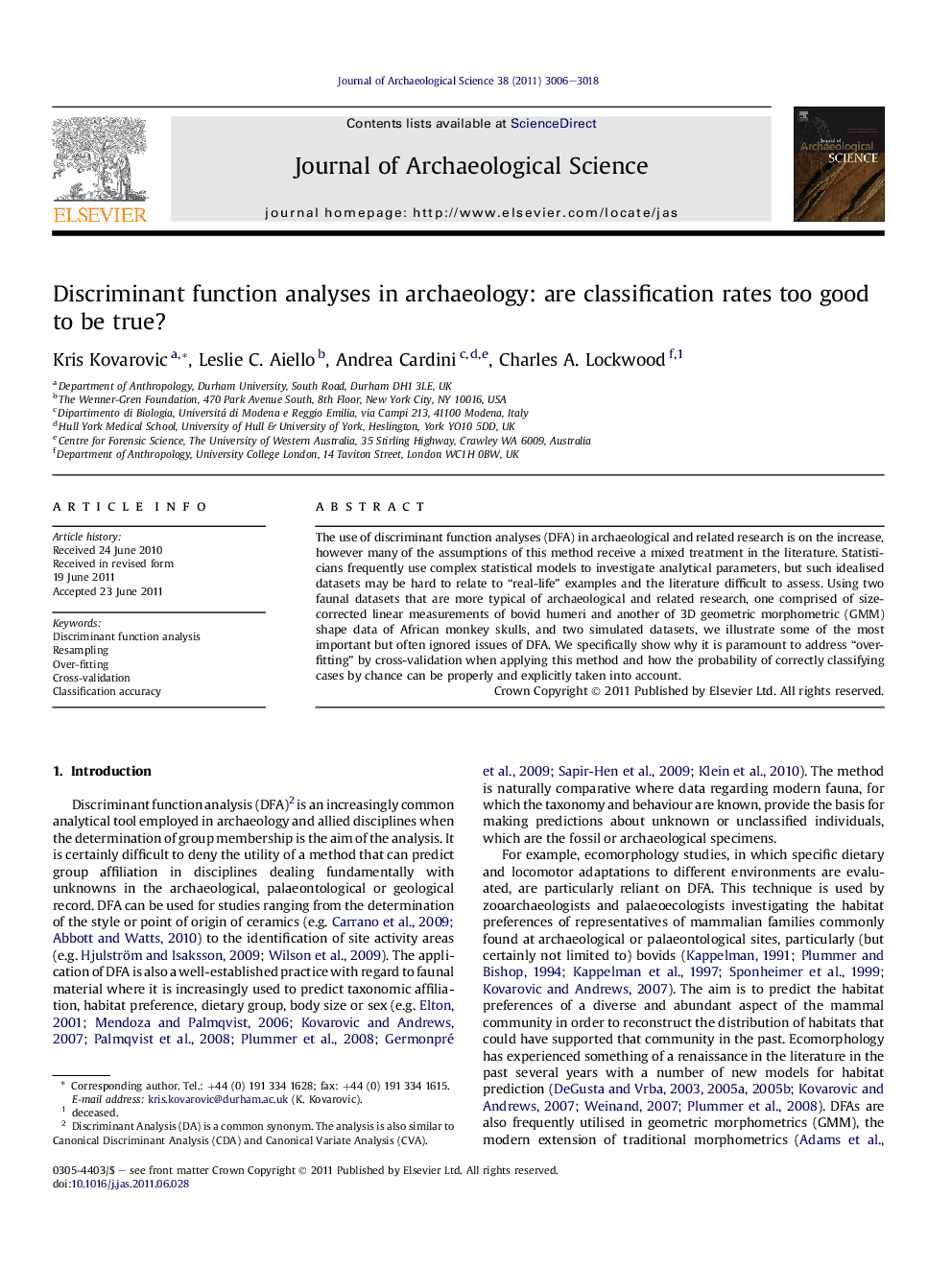| کد مقاله | کد نشریه | سال انتشار | مقاله انگلیسی | نسخه تمام متن |
|---|---|---|---|---|
| 1036154 | 943877 | 2011 | 13 صفحه PDF | دانلود رایگان |

The use of discriminant function analyses (DFA) in archaeological and related research is on the increase, however many of the assumptions of this method receive a mixed treatment in the literature. Statisticians frequently use complex statistical models to investigate analytical parameters, but such idealised datasets may be hard to relate to “real-life” examples and the literature difficult to assess. Using two faunal datasets that are more typical of archaeological and related research, one comprised of size-corrected linear measurements of bovid humeri and another of 3D geometric morphometric (GMM) shape data of African monkey skulls, and two simulated datasets, we illustrate some of the most important but often ignored issues of DFA. We specifically show why it is paramount to address “over-fitting” by cross-validation when applying this method and how the probability of correctly classifying cases by chance can be properly and explicitly taken into account.
► Two datasets typical of archaeological and palaeontological studies are investigated.
► We show why cross-validated discriminant function analysis results are preferred.
► Chance-corrected classification rates and related indices (e.g. TAU) should be used.
► Adding too many predictor variables amplifies over-fitting and the peaking effect.
► A summary of methodological issues and recommendations for the use of DFA are given.
Journal: Journal of Archaeological Science - Volume 38, Issue 11, November 2011, Pages 3006–3018